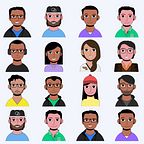How Obviously AI Started a Machine Learning Company From an AirBNB
The world is filled with data, a lot of data — pictures, music, words, spreadsheets, videos; and it doesn’t look like it’s going to slow down any time soon. Machine Learning is about deriving meaning from all of that data.
“Any sufficiently advanced technology is indistinguishable from magic”. — Sir Arthur C Clarke
Personally, I have found machine learning not to be magic, but rather tools and technology one can utilize to answer questions with their data. Over the last few years, I rigorously studied Machine Learning and Behavioral Economics to better understand how we can take consumer behavior data and find meaningful insights form it.
Most people believe customer behavior to be rational, meaning — they explore all the products, learn about them and make informed decision on what to buy. But as we know from experience, we don’t quite behave that way. When we smell the aroma of freshly baked pizza near a shop, we ditch our diet and call it an off day. This action — where we think we will behave one way, but we actually don’t; is called irrational behavior.
My question as a data scientist was — Is this irrational behavior predictable? Can we teach machines to understand it? And can we use machine learning to predict such behavior? I didn’t know it then, but the answers to these questions were buried deep inside an idea I had stumbled upon during the Summer of 2018. It was about to change everything.
Summer of 2018, I moved to San Francisco in an AirBNB house with 10 other people (who eventually became great friends). I took a job at a software company where I headed the their data science initiatives and helped them crunch industry wide numbers that went on to be picked up by NYTimes, TechCrunch and many more.
Because of the nature of their product, almost all developers in the company were Web Engineers and had solid expertise in building web based cloud systems. However, as a data science engineer I was the only one with background in statistics and machine learning. I was assigned to work on a project that could predict market trends for the company, but eventually I ended up drifting away as a product manager, one day, asked me if I could help him understand which customers are at the risk of switching to a competitor product.
This was an intriguing question, I decided to pause my work and help him out. As I did, I started to realize that this simple question required complex data crawling, cleaning, feature engineering and architecting a machine learning algorithm that would classify if the users are at risk of leaving or not.
Finally, after 2 solid weeks, we had a list of at-risk users with 78% accuracy. This was very exciting, but at days passed by I started to get more requests from other product managers to help them answer more questions — Why are users churning? Is there a chance they will come back? What is common between our best users?
These were great questions but I only had limited bandwidth to help all of them out. As a result, I started to go through different existing solutions that they could use to get their answers without my assistance.
As I did, I started to find that almost all solutions required them to have a background in data science or machine learning to be able to answer these questions. Other solutions that were less tech heavy, required writing complex SQL queries to wrangle data which too was a tough job for most non-technicals. Moreover, all tools had a technical and complex UI that in itself was hard to decode. With this, something slowly began to dawn on me -
All customer behavior questions were being asked by non-technical people, but all the tools to answer those questions were made for technical people!
Because of this they always needed someone like me, who has a background in data science, in the loop. What if we didn’t have to be in the loop?
With this market insight, I turned to my roommate and college friend Tapojit.
And together we decided to create a quick and dirty prototype of our idea — a tool that allows simple drag and drop interface to predict customer behavior. Users can run complex predictive analytics tasks by simply asking a question in plain English: “Which customers are likely to buy again next week?”. By this time, we had quit our jobs and didn’t have money to pay for our AirBNB rent.
We requested our AirBNB host to let us stay and she gave us access to her entire garage in the basement.
Finally after months of living in the basement and eating ramen noodles, we created the most simple and efficient way to run data science for non-technical users. We call this tool Obviously AI, and here it is:
Not only was this 100x simpler but also revolutionized the entire machine learning workflow to something as simple as shown below.
Today, we have moved out from the garage and run our operations from Berkeley. Our company is still relatively young but we are on a mission to create machine learning easy to use for non-technical people. And we’re starting with non-technical product and growth managers at high-growth businesses that want to leverage their existing customer data to transform their business and change how they make data-driven decisions.
Originally published at https://www.obviously.ai.
